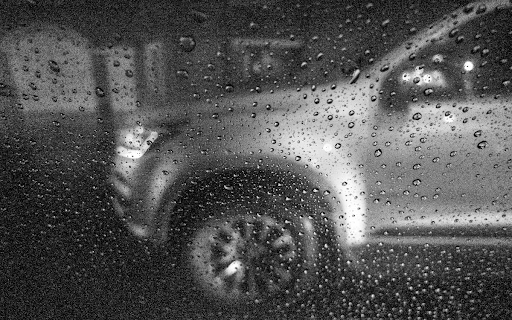How to dry wet car seats in winter. Wintertime damp car seat problems are much more than a minor annoyance; they can rapidly worsen and compromise the comfort and durability of your car’s interior. Moisture evaporation is greatly hampered by winter’s cold temperatures and higher humidity, particularly if your car is well sealed to retain heat. This retained moisture can cause a number of issues, such as persistent moisture, disagreeable musty smells, the growth of mold and mildew, stains, and even permanent harm to the padding or seat fabric.
In certain situations, dampness may cause faults or expensive repairs if it gets to electrical parts like heated seats. We’ll show you easy yet efficient ways to dry damp car seats in the winter in this post. You’ll find useful advice to expedite the drying process and safeguard the interior of your car, from do-it-yourself projects at home to expert-grade tools.
Why Winter Makes It More Difficult to Dry Wet Car Seats
The procedure of drying the interior of your car presents special difficulties in the winter. The natural evaporation process is slowed by cold air because it stores less moisture. Additionally, it’s more probable that your automobile will be sealed up for warmth, which would decrease airflow. Many places have high levels of ambient humidity and little sunlight. Once moisture is trapped in your car seats, it becomes more difficult to escape due to all of these factors.
The longer your car seats are damp, the greater the likelihood that:
- Growth of mold and mildew
- Remaining musty odors
- Water rings or stains
- Damage to the interior fabric
- Electrical problems (if moisture gets to electronics or seat heaters)
Even in the harsh winter weather, it is crucial to take prompt action and employ focused techniques to dry the seats.
How to dry wet car seats in winter
Car seats can get wet in the winter for a variety of reasons, including melted snow from coats and boots, rain from open windows or doors, hot beverages like coffee or tea spilling, or leaks from broken door seals or sunroof gaskets. Drying wet seats quickly and efficiently is essential to avoiding long-term problems, regardless of the cause. Winter calls for a more calculated approach than the warmer months, when the process can be aided by natural sunlight and dry air.
The secret to success is to move fast, use the right equipment, and make use of artificial heat sources, adequate air circulation, and the limited daylight hours. Your car’s odor, cleanliness, and resale value may all suffer if the moisture is allowed to persist for an extended period of time.
Step 1: Eliminate Extra Wetness Right Away
Eliminating as much water as possible as soon as possible is the first and most important step.
Blot with Absorbent Towels: Blot the damp areas with thick cotton towels or microfiber towels. Don’t rub; instead, apply pressure to absorb the liquid. Continue using dry towels until all of the water has been removed.
Use a Wet/Dry Vacuum: To remove moisture from the seat’s cushioning and fabric, use a wet/dry shop vacuum if you have one. Use slow, overlapping strokes to draw water out of the seat’s deeper layers.
Pro tip: For best results, use the vacuum in conjunction with towels.
Step 2: Take off any cushions or seat coverings that may be necessary.
Remove any detachable covers or cushions from your automobile seats and dry them separately. If the material permits, wash and spin-dry. This will expedite the drying process and improve air circulation through the seat base.
Step 3: Utilize Airflow and Heat to Hasten Drying
You’ll need to establish your own warm, dry environment because drying might be significantly slowed down by winter temperatures.
1. Use a Portable Space Heater (Safely): Place a portable space heater near the damp seat, but keep it a safe distance away to avoid fabric damage or fire hazards. Run it for short bursts of time while closely monitoring it. Never leave the heater unattended and make sure it is on a stable, non-flammable surface. For extra safety, choose devices with automatic shut-off capabilities. To guarantee uniform drying and avoid hot areas, occasionally switch the heater’s direction. On chilly winter days, this technique, when combined with towel blotting and ventilation from a fan or slightly open window, can greatly expedite the drying process.

2. Activate the Car’s Heater:Start the engine and set the climate control to high. Adjust the airflow so that it blows straight at the seat surfaces and footwells. Windows should be kept slightly open to let moisture out. This procedure works particularly well when paired with a dryer.
3. Turn on a Fan or Hair Dryer: An efficient tool for focused drying is a blow dryer set to low heat, particularly for small, damp areas or moisture-retaining seams. To avoid overheating, use it in sweeping motions and maintain a safe distance from the surface at all times. A domestic fan can facilitate speedier evaporation by circulating air throughout the car’s interior for greater ventilation. This technique is most effective when used in conjunction with open doors or cracked windows to let moisture out. When drying fragile materials like leather, always use caution to prevent warping, splitting, or discoloration from too much heat.
Step 4: Make use of a dehumidifier or moisture absorbers
Silica Gel or Absorbers of Moisture:
Overnight, place professional moisture absorbers, like DampRid, on the car’s seat or floor. These aids hasten the drying process by drawing moisture from the air.
Portable Dehumidifier: If you have a garage, you can use a tiny plug-in dehumidifier inside your car while the doors are closed to help dry the seats more quickly and drastically lower humidity. In the winter, this is one of the best techniques.
Step 5: If at all possible, let the car air out.
Open your car’s doors and windows for 30 to 60 minutes to allow fresh air to circulate whenever there’s a bright or dry day, even if it’s cold. Even in chilly weather, sunlight can aid in drying, so park in a sunny area.
Pro tip: To prevent your garage or driveway from getting wet, lay plastic mats or towels underneath the car doors if there is snow on the ground.
Step 6: Check for Bacteria and Odor
Remaining wetness might leave bacteria and smell behind, even if the seats are dry.
To eradicate any bacteria that may have been left behind by moisture, use a fabric-safe disinfectant spray.
To get rid of smells, sprinkle baking soda on the seat and vacuum it up a few hours later.
Use a car upholstery deodorizer made especially for leather or fabric seats.
Extra Advice Depending on the Type of Seat:
Consider the following advice and follow it accordingly.
Cloth seats:
Cloth seats take longer to dry and are very absorbent. Here, a dehumidifier and a wet/dry vacuum work best. When cleaning the seats later, try not to get them too damp
Leather Seats:
Although leather is less absorbent, cold and standing water can still harm it. Make use of a low-heat source and microfiber towels. To keep it from breaking, use a leather conditioner after it has dried.
Heated Seats:
Wait until the seats are largely dry before turning on the heaters. In damp seats, turning on heated elements may result in short circuits or irreversible damage.
Things Not to Do
- Steer clear of applying intense heat directly to seats. Leather may fracture, or upholstery may sustain damage.
- Small, moist areas should not be disregarded. Over time, mildew and stink can develop from even small amounts of moisture.
- Don’t always keep your windows closed. Particularly when using heat inside the vehicle, some air movement is essential.
Conclusions
How to dry wet car seats in winter? It is completely possible to dry wet vehicle seats in the winter if you have the proper equipment, perseverance, and technique. However, a combination of absorption, airflow, heat, and dehumidification can successfully remove moisture and prevent long-term damage, even though the process is made more difficult by the freezing temperatures and lack of ventilation. Quick action and thorough drying methods are crucial whether you’re dealing with a dropped drink, snow from your coat, or a serious water leak.
Here are some winter-proof drying tips to keep your car’s interior safe, save expensive repairs, and keep your ride comfortable and fresh throughout the season. Investing in protective seat covers, all-weather mats, and routine interior inspections will help you maintain your car in great condition all year long.
Frequently Asked Questions (FAQ)
1. Is it possible to dry wet vehicle seats without a garage during the winter?
It is possible to dry wet vehicle seats without a garage, but it will need time and ingenuity. First, use absorbent towels to completely blot the seats. Next, use a wet/dry vacuum to remove any remaining moisture. Overnight, place moisture absorbers such as DampRid or silica gel inside the vehicle. If at all feasible, park in a sunny area during the day and open the windows to let fresh air in. Run the car heater with the windows slightly open or use a space heater next to the vehicle (under supervision and securely). Even in cold weather, seats can be successfully dried with these combined efforts.
2. In winter, how long does it take for vehicle seats to completely dry?
Depending on the amount of moisture, temperature, ventilation, and drying equipment, drying wet car seats in the winter might take anywhere from 12 to 48 hours. Particularly in the absence of external heat or dehumidifiers, cloth seats retain more moisture and last longer. Drying time can be greatly shortened by using towels, a wet/dry vacuum, fans, dehumidifiers, and space or automobile warmers. The process can be slowed down and the risk of mildew increased if the car is left buttoned up with no airflow. To avoid long-term damage or odor, take quick action, maintain consistency in drying efforts, and often monitor moisture levels.
3. Can damp automobile seats be safely dried with seat heaters?
It is not advised to use seat heaters to dry wet automobile seats unless they are already largely dry. In addition to causing short circuits and possibly voiding warranties, turning on heated seats while the padding is still wet can harm internal electronics. Rather, dry the seats by hand first, using dehumidifiers or external heat, blotting with towels, then vacuuming out any moisture. You can safely put on seat heaters to aid in the drying process if the surface feels dry to the touch and there is very little moisture left. Always keep a watchful eye on things, particularly when handling leather or vintage cars with delicate wiring.
4. What are the finest wintertime tools for rapidly drying vehicle seats?
A wet/dry vacuum, microfiber towels, a portable space heater (when used carefully), a plug-in dehumidifier (particularly in a closed garage), and moisture absorbers like DampRid or silica gel are the best tools for rapidly drying car seats in the winter. Targeting certain damp areas might be aided by using a hair dryer set on low heat. It’s crucial to combine these instruments with ventilation, which can come from a fan or slightly open windows. If you lack access to all of these instruments, concentrate on using towels and a vacuum to extract moisture first, followed by heat and air movement to effectively eliminate any remaining dampness.
5. What should I do if, even after drying the seats, my car still has a musty smell?
After drying the seats, if your car still smells musty, it’s either because mildew has begun to grow or there is still concealed moisture present. First, press into the seats and look under the cushions to make sure there is no moisture present. Use a dehumidifier, install moisture absorbers inside the car, and let fresh air circulate to reapply moisture-removal processes. To eliminate microorganisms that cause odors, apply a fabric-safe disinfectant spray to the seats. After a few hours, vacuum the afflicted regions and sprinkle them with baking soda. To completely get rid of lingering scents, think about hiring a professional interior detailing service or purchasing an automobile ozone generator.








